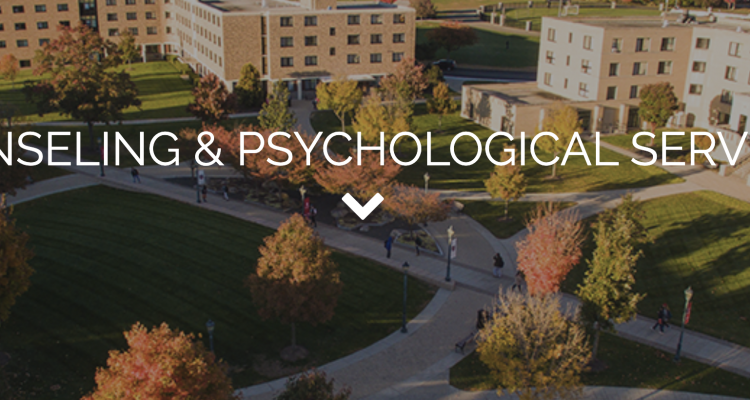I set out to write an article for The Mirror on an event called “Looking Ahead: The Future of the Republican Party” on Jan. 27, planning to write a two-part series about the political spectrum after the historic election in 2020. However, the moment I entered the Zoom call, I quickly realized that myself and the host, Zachary Quinones, were the only ones there. We sat on the call for a good 30 minutes and chatted, but nobody else joined. Not a single person. I said my goodbyes to Quinones and left the meeting, stunned and confused.
As it turns out, this has been a common theme for events across campus. It seems that less people are showing up to events that would normally draw in tons of students. Instead, many events, especially virtual ones, have been suffering with low attendance, or no attendance whatsoever. This is especially true for Residence Assistant-run programs, which have been dealing with decreased attendance rates since Fall 2020.
John Prignano ‘22, an RA in Meditz Hall, has noticed the lower attendance rates, or lack thereof, for several months.
“I told my supervisor last semester that my fear was that these kids would see programs as nothing but just another Zoom thing,” Prignano said.
Christiana Pitrelli ‘21, an RA in Loyola Hall, agreed with Prignano.
“Most events have to be virtual, and we’re all spending all day on Zoom for classes so not many people want to spend even more time on it,” Pitrelli added.
This has proven true throughout the student population. In a survey of 50 random people from across campus, some students claimed in an optional short response question that virtual events just felt like Zoom classes.
One respondent said, “I already spend so much class time virtually, so it would just be more of staring at a computer,” with others agreeing, stating that Zoom events were, “not worth my time,” or simply that “Zoom is awkward.”
While the survey showed that 82 percent of the respondents had attended Zoom events in the past, RA and residence hall-sponsored events are still suffering.
RA Dominika Mis ‘22 noticed this lack of virtual attendance in McCormick Hall. Mis said that her in-person events in the fall had been relatively well attended, with 25 residents showing up to outdoor programs, such as a tie-dye event. However, only around seven or fewer residents attended her online programs, with some even drawing no participants at all.
“Zoom programs are definitely less attended because the students are online all day so they don’t want to be in even longer. They also don’t get the same interaction with the community, so it may not seem worth it to come,” Mis said.
Mis also noticed that it has been hard to even provide incentives for students to come to events.
“Essentially, it’s out of our hands for virtual programs. We can come up with different ideas and encourage residents to come, but we can’t force them,” explained Mis. “It’s come to the point where gift cards don’t even encourage students.”
Jogues Hall RA GianCarlo Giannini ‘23 agreed with Mis. Most of his virtual events only drew around two to three attendees.
Despite this, the Office of Student Engagement claimed that, “The attendance for our virtual events has primarily remained the same as our fall semester; depending on the type of event, our attendance ranges.” For example, last week’s Macklemore Q&A drew a virtual crowd of over 300 people. Outdoor events, like New England Day, also drew large crowds of students, especially since Connecticut law allows for outdoor gatherings of up to 50 people.
Overall, it seems that outdoor events in warmer weather were fairly popular. While this may not be a practical option in the cold New England winter months, the Office of Student Engagement plans to begin hosting outdoor events again once the study-in-place period ends and the weather warms up.
One surveyed student proposed more virtual arts programming, such as streaming plays, movies and concerts. Another suggested more grab-and-go events, like the Fairfield University Student Association’s ugly Christmas sweater pick-up program they hosted in November.
Some of the events that drew the most student participation were those that provided First Year Experience credits. Pitrelli noticed this when hosting a fall event with Prignano.
“We got approved for an FYE Inspire credit so we had some first-years come, and then we also had some upperclassmen because we have friends in the upper class Southside area,” Pitrelli said. “I think the FYE credit was a good incentive, especially since our program was towards the end of November which is when first-years may feel a bit of a little time crunch to get all their credits done.”
While the RA program has been struggling with low attendance at virtual events, most students say that they would be willing to attend in-person events again in the spring, with 68 percent of surveyed students stating that they would definitely attend in-person events and the other 32 percent saying maybe.
It may seem that a return to normalcy will be far in the future, but both RAs and the Office of Student Engagement hope to make events feel as fun for students as possible, even with the pandemic still raging.
“Once our students are able to return to in-person classes, we plan to move back to our hybrid model of events. This would include our grab-and-go events. This would allow students in small groups to come and pick up a DIY kit or project from a centralized location and bring that back to their residence to make with friends, or remain in that location, as long as our overall gathering is under 25 people,” said the Office.
All in all, the only thing that can increase attendance at virtual events is student effort, and it’s up to the Fairfield community to make programs their own.


Leave a Reply